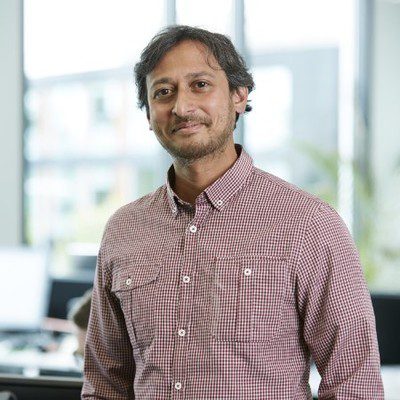Dr Sumanta Talukdar, Founder & CEO of Gardin, takes us through the importance of digital phenotyping in agriculture, his views on the sector and what he thinks the future holds for food production.
What led you to phenotyping and sensor technology for food production?
“I developed a personal interest in food production primarily born of the question – ‘why is it that all the fresh produce I buy looks great but really lacks in quality?’ I don’t come from a plant science or food industry background at all, and not knowing anything about the industry means that you’re allowed to ask a lot of questions, so I spent a year meeting people from all parts of the food industry doing just that.
In this period I attended many conferences and during one such event I recall asking a leading academic if he was aware of the methods employed to measure the ‘goodness’, for lack of a better word, of the food we buy. His answer came as no surprise, the reality was that there wasn’t. The only quality monitoring processes in use in production are based on cosmetic criteria. He said that whilst this is suboptimal and there is a need to digitally monitor the physiology of plants, it’s ‘all we have’.
My background is physics. A lot of people I have worked with in the past have been in the technology industry and I knew there are ways of remotely measuring chemistry or biology.”
How do you view the digital phenotyping landscape in the UK?
“Phenotyping is not new, so there is a rich knowledge base already out there. However, what we have seen is that the ecosystem is quite fragmented. Unfortunately, this doesn’t help us, on the contrary, it creates more noise. However, I think in the UK especially over the last couple of years we’ve seen more concerted, sophisticated efforts from the government in terms of both public funding as well as signs of consolidation between the research done at various universities.
It is an ecosystem in need of evolving to solve the problem in its entirety. The good news is we are seeing excellent work done by some very clever people in other spaces. People looking at biome, microbiome and soil research – it does feel like the ecosystem is coming together now. For example, if you look at the obvious leaders in the industry, such as the Netherlands, industry and academia work so well together, it is very much a concerted effort.”
How can farmers and growers benefit from adopting digital phenotyping in their everyday farming practices?
“Farming is becoming more precise, and this is primarily driven by sensing and automation platforms. Crop physiology is becoming the de facto metric for measuring food value and therefore food quality in the future. Productivity today is measured at per field or hectare, however in the future this will become more specific and focus on per plant. All this would be enabled by digital phenotyping where you can monitor the environment, soil, anything of interest.
Everybody in the industry knows that today a big proportion of yields each year is lost to biotic and abiotic stress, so that’s going to be huge in itself. The other aspect is there are quite a few techniques already there to monitor concentration of specific compounds proteins, pigments, water content and so on. They will get better and better and allow us to really get a good grip on how crops are utilising the resources. I think understanding what is happening to your plants is really time consuming and giving farmers and growers a tool to remove that bottleneck allows them to do what they’ve always done best – grow, but also better.”
What is your vision for the future of digital phenotyping in agriculture/horticulture?
“We need to be able to make the technology as cheap as possible, and given where we are today, we can do that. Gardin has done just that. We also need to reduce food waste, agricultural emissions and in doing so we have to take a closer look at energy, water and fertiliser use. At this point, we have the capacity to start improving the ecosystem. In the very near future, technologies such as ours will enable ‘biofeedback’ wherein food production will start shifting from empirical and recipe driven processes to ‘plant – driven’ processes wherein sensors monitoring the crops directly detect exactly what the crops need and optimise the resource allocation to give the crops exactly that at exactly the right time. The end result – more yield, healthier crops and less resource use.”
Find out more about Gardin here. For more information about digital phenotyping visit out webpage here.
Please note, the opinions expressed in this article are the author’s own and do not necessarily reflect the views or opinions of CHAP.












